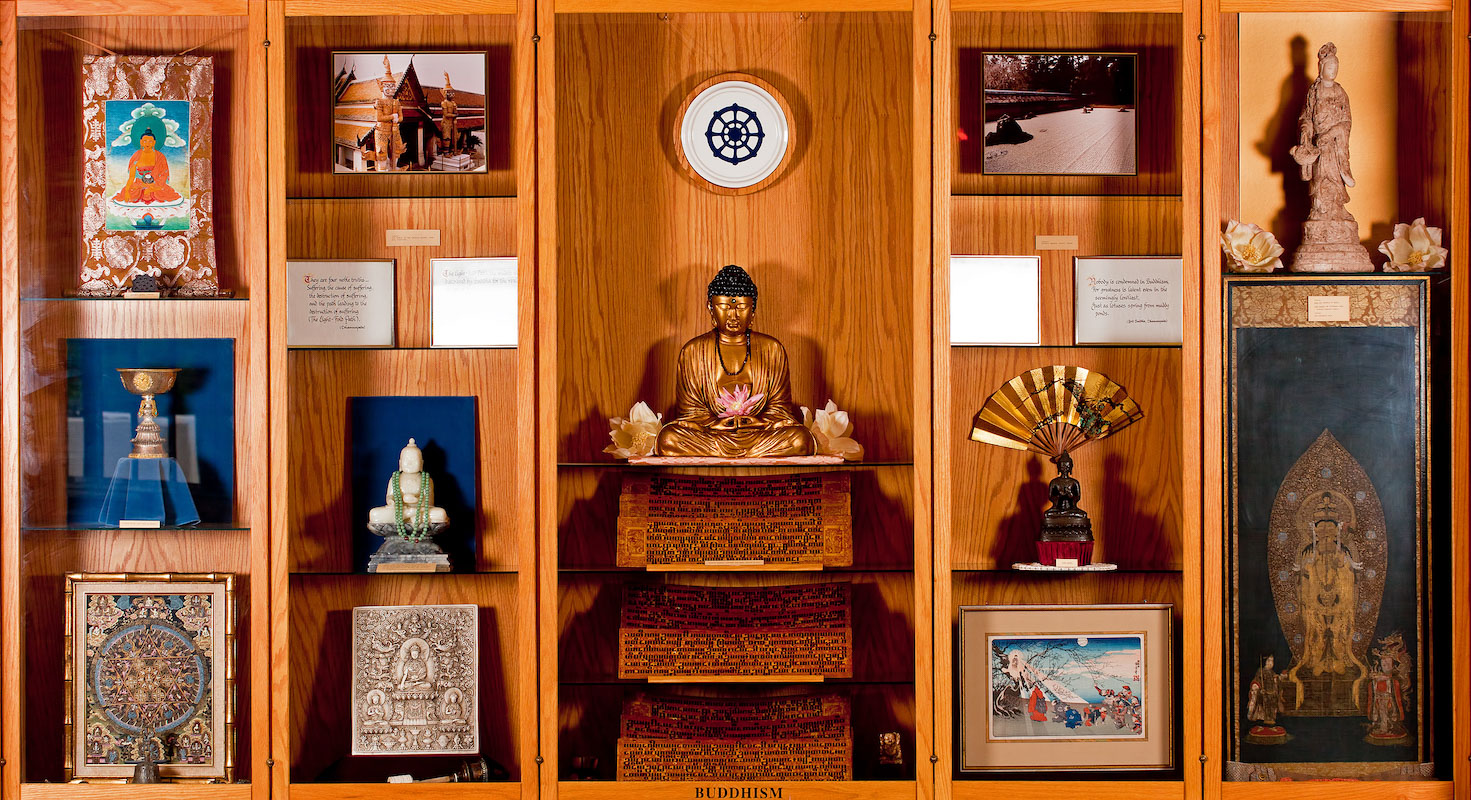Buddhism
Dasa-sila (Ten Requisites of Good Behavior)
- Abstinence from destroying life
- Abstinence from taking what is not given
- Abstinence from false speech
- Abstinence from adultery
- Abstinence from slander
- Abstinence from harsh or impolite talk
- Abstinence from frivolous and senseless talk
- Abstinence from covetousness
- Abstinence from malevolence
- Abstinence from heretical views
—Sutta Pitaka
The Ten Perfections
- Giving
- Patience
- Virtue
- Truth
- Renunciation
- Resolution
- Insight
- Lovingkindness
- Fortitude
- Serenity
—Visuddhimagga

Compassion: Om Mani Padme Hum
“My doctrine makes no distinction between high and low, or between rich and poor. It is like the sky. It has room for all; and like the rain it washes all alike.”
—The Buddha
The primary goal of Buddhism is described as Nirvana and defined as the end of change. It literally means “to blow out” as one blows out a candle. The Buddhist religion, in giving a practical path to this goal, emphasizes experience rather than theory.
The central figure of the Buddhist faith, Gautama Buddha, was born to a royal family in the Himalayan foothills. After spending his youth shielded from any knowledge of pain, old age, and death, he confronted these harsh realities. The Prince’s reaction to this confrontation was to renounce the world of comfort and wealth and to take up the life of a wandering monk. He practiced severe austerities without finding the answers he sought. Finally, he sat beneath a fig tree, resolving to remain there until the Truth was revealed. After seven weeks of meditation, he attained enlightenment.
For the next forty years, The Buddha, or “Awakened One,” spread the doctrine of the Four Noble Truths and the Eightfold Path. The Buddha’s experiences taught him that to give oneself up to indulgence in sensual pleasure or to give oneself up to self-mortification are extremes to be avoided. He advocated a moderate way of life known as “the middle path.”
The greatness of The Buddha’s teaching is demonstrated by his own life. A human being who attained enlightenment through his own effort, he embodies the timeless ideal of humanity perfected. If it was possible for Buddha to undergo this transformation, then it is possible for all.
“Not only the fact of suffering do I teach, but also deliverance from it.”
— The Buddha
Buddhism Display in LOTUS All Faiths Hall
All Faiths Hall Quotations
There are Four Noble Truths: Suffering, the cause of suffering, the destruction of suffering, and the path leading to the destruction of suffering (The Eightfold Path).”
—Dhammapada
“The Eightfold Path, the middle way, discovered by Buddha for the realization of Nirvana: right understanding, right thought, right speech, right action, right livelihood, right effort, right mindfulness, and right concentration.”
—Dhammapada
“I take refuge in the Buddha, I take refuge in the Dhamma, I take refuge in the Sangha.”
—The Three Refuges
“Nobody is condemned in Buddhism,
For greatness is latent even in the seemingly lowliest,
Just as lotuses spring from muddy ponds.”
—Lord Buddha

